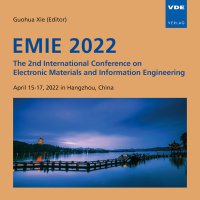Analysis of Temporal and Spatial Characteristics of Transmission Line Ice-covering in Jinhua Grid Based on Distributed Full-line Optical Monitoring Data
Konferenz: EMIE 2022 - The 2nd International Conference on Electronic Materials and Information Engineering
15.04.2022 - 17.04.2022 in Hangzhou, China
Tagungsband: EMIE 2022
Seiten: 5Sprache: EnglischTyp: PDF
Autoren:
Gu, Hao; Zhao, Junjie (Jinhua Power Supply Company, State Grid Zhejiang Electric Power Company, Jinhua, Zhejiang, China)
Li, Tao; Zheng, Zhuang; Zheng, Luyao (NARI Group Corporation (State Grid Electric Power Research Institute), Nanjing, Jiangsu, China & Wuhan NARI Limited Company, State Grid Electric Power Research Institute, Wuhan, Hubei, China)
Inhalt:
Icing is one of the most destructive disasters that threaten the safe and stable operation of transmission lines. This paper is to explore the differences of icing caused by the microtopography and micrometeorology along the transmission line, thus the temporal and spatial characteristics of the 220kV Ningzhu line and Xiyan line of Jinhua Power Grid in the winter of 2020-2021 are analysed based on distributed full-line optical monitoring. The results show that affected by the cold- moist desynchronization in winter and extraordinary warmth in early spring, the 220kV Ningzhu line and Xiyan line suffer slight icing, and the icing is strongly correlated with the local microtopography and micrometeorology. Among the topographical factors that are likely to cause icing, altitude and the windward slope have the greatest impact. Other topographical factors such as valley, wind channel, mountain pass, larger-scale water, and meteorological factors such as wind direction are second. The angle between the line and near-surface wind direction also exerts a strong influence on line ice-covering. The monitoring and analysis method adopted in this paper provides a new idea for the line operation and maintenance department to lay targeted ice monitoring in key sections and to carry out specific antiicing retrofit.


